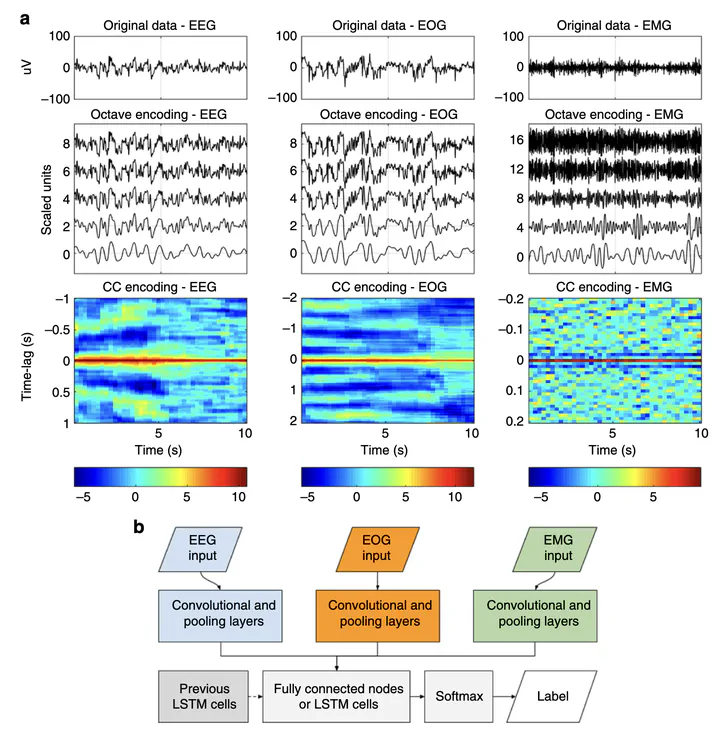Neural Network Analysis of Sleep Stages Enables Efficient Diagnosis of Narcolepsy
Dec 6, 2018· ,,,,,,,,,,,,,,,,,,,,,,,,,,,,·
0 min read
,,,,,,,,,,,,,,,,,,,,,,,,,,,,·
0 min read
Jens B Stephansen
Alexander Neergaard Zahid
Mads Olsen
Aditya Ambati
Eileen B Leary
Hyatt E Moore
Oscar Carrillo
Ling Lin
Fang Han
Han Yan
Yun L Sun
Yves Dauvilliers
Sabine Scholz
Lucie Barateau
Birgit Hogl
Ambra Stefani
Seung Chul Hong
Tae Won Kim
Fabio Pizza
Giuseppe Plazzi
Stefano Vandi
Elena Antelmi
Dimitri Perrin
Samuel T Kuna
Paula K Schweitzer
Clete Kushida
Paul E Peppard
Helge B. D. Sørensen
Poul Jennum
Emmanuel Mignot

Abstract
Analysis of sleep for the diagnosis of sleep disorders such as Type-1 Narcolepsy (T1N) currently requires visual inspection of polysomnography records by trained scoring technicians. Here, we used neural networks in approximately 3,000 normal and abnormal sleep recordings to automate sleep stage scoring, producing a hypnodensity graph—a probability distribution conveying more information than classical hypnograms. Accuracy of sleep stage scoring was validated in 70 subjects assessed by six scorers. The best model performed better than any individual scorer (87% versus consensus). It also reliably scores sleep down to 5 s instead of 30 s scoring epochs. A T1N marker based on unusual sleep stage overlaps achieved a specificity of 96% and a sensitivity of 91%, validated in independent datasets. Addition of HLA-DQB1*06:02 typing increased specificity to 99%. Our method can reduce time spent in sleep clinics and automates T1N diagnosis. It also opens the possibility of diagnosing T1N using home sleep studies.
Type
Publication
Nature Communications